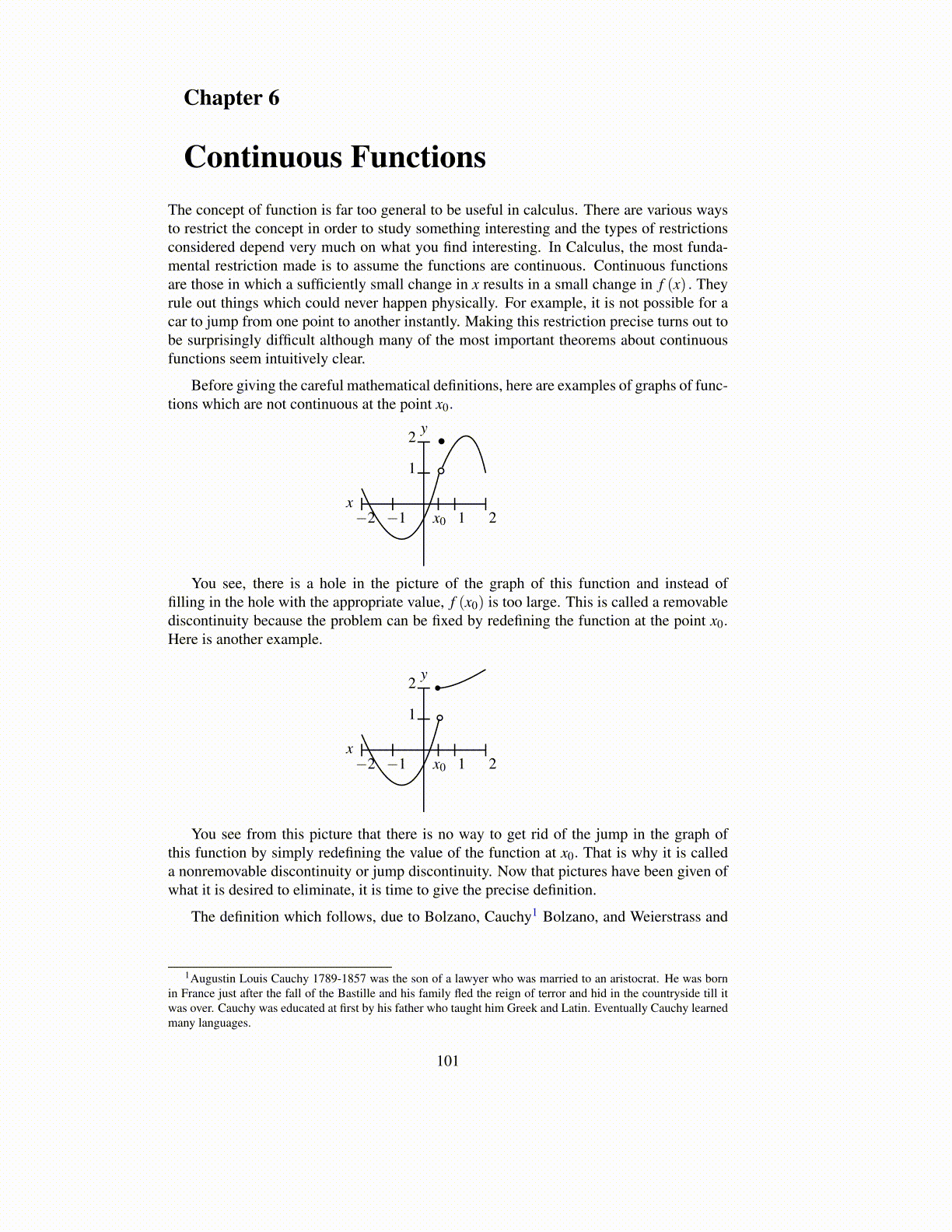
101
Notice that the concept of continuity as described in the definition is a point property.That is to say it is a property which a function may or may not have at a single point. Hereis an example.
Example 6.0.3 Let
f (x) ={
x if x is rational0 if x is irrational .
This function is continuous at x = 0 and nowhere else.
If xn → 0, then | f (xn)| ≤ |xn| and |xn| → 0 so it follows that f (xn)→ 0 ≡ f (0) andso the function is continuous at 0. However, if x ̸= 0 and rational, you could consider asequence of irrational numbers converging to x, {xn} and f (xn) = 0→ 0 ̸= f (x). If xis irrational, you could pick a sequence of rational numbers {xn} converging to x and sof (xn) = xn→ x ̸= f (x). Here is another example.
Example 6.0.4 Show the function f (x) =−5x+10 is continuous at x = −3.
To do this, note first that f (−3) = 25 and it is desired to verify the conditions forcontinuity. Consider the following. |−5x+10− (25)|= 5 |x− (−3)| .
This allows one to find a suitable δ . If ε > 0 is given, let 0 < δ ≤ 15 ε. Then if 0 <
|x− (−3)| < δ , it follows from this inequality that |−5x+10− (25)| = 5 |x− (−3)| <5 1
5 ε = ε.Sometimes the determination of δ in the verification of continuity can be a little more
involved. Here is another example.
Example 6.0.5 Show the function f (x) =√
2x+12 is continuous at x = 5.
First note f (5) =√
22. Now consider:∣∣∣√2x+12−
√22∣∣∣= ∣∣∣ 2x+12−22√
2x+12+√
22
∣∣∣=
2√
2x+12+√
22|x−5| ≤ 1
11
√22 |x−5|
whenever |x−5|< 1 because for such x,√
2x+12 > 0. Now let ε > 0 be given. Choose δ
such that 0 < δ ≤min(
1, ε√
222
). Then if |x−5|< δ , all the inequalities above hold and
∣∣∣√2x+12−√
22∣∣∣≤ 2√
22|x−5|< 2√
22ε√
222
= ε.
Example 6.0.6 Show f (x) =−3x2 +7 is continuous at x = 7.
Suppose xn→ x. Then by the theorem on limits, Theorem 4.4.8, −3x2n +7→−3x2 +7
and so this function is continuous at x. In particular, it is continuous at 7.
Proposition 6.0.7 For x ∈ Fp, and S⊆ Fp,S ̸= /0, let
inf{∥x− s∥ : s ∈ S} ≡ dist(x,S)
Then|dist(x,S)−dist(y,S)| ≤ ∥x− y∥ (∗)
so dist : Fp→ R is continuous.